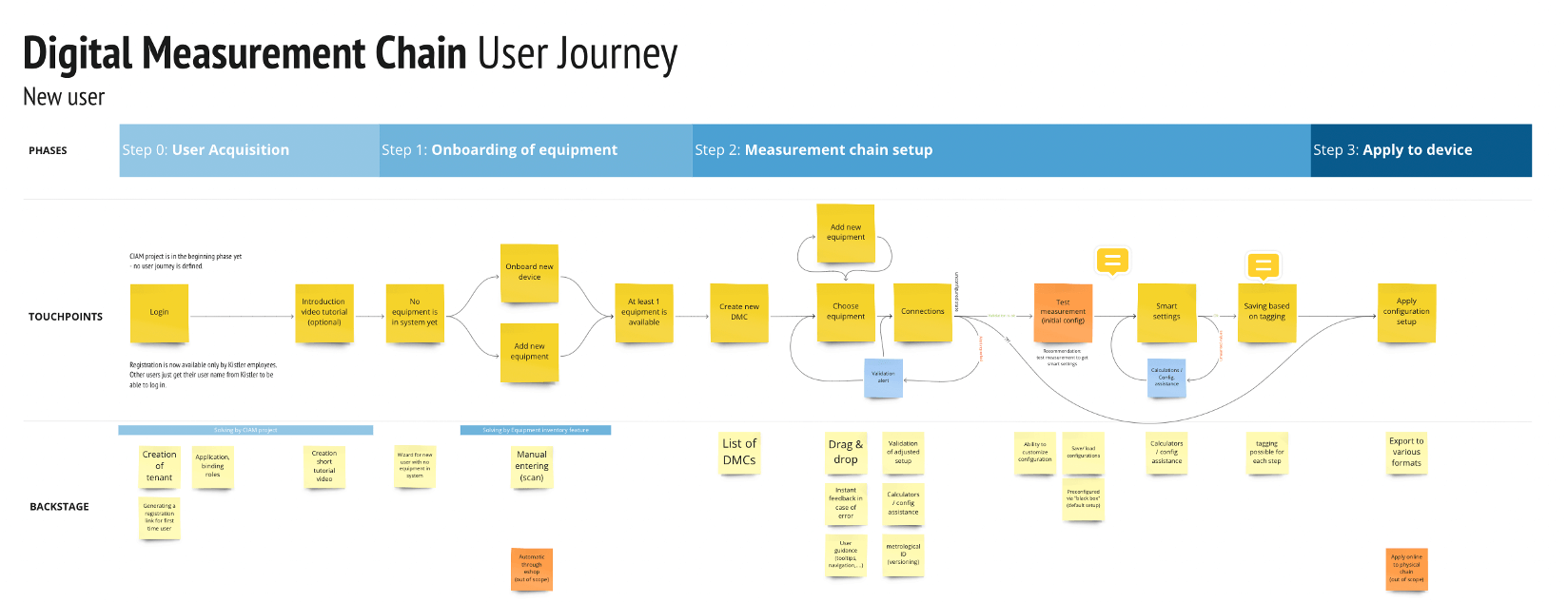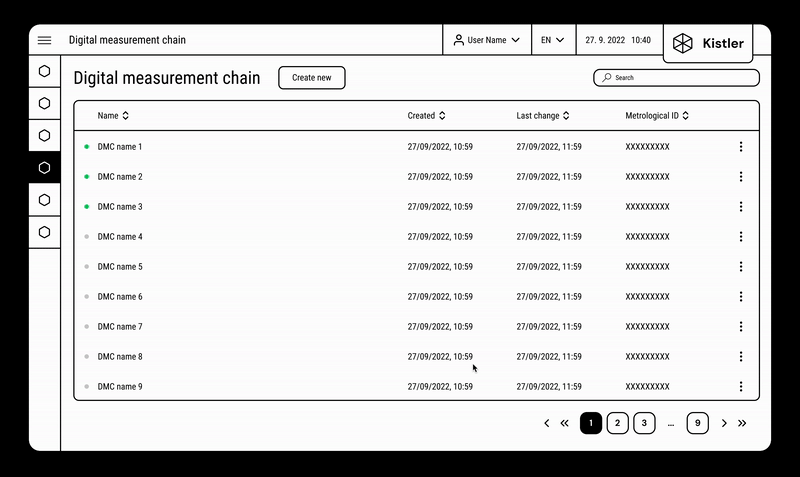👀 Challenge
Users of the company's equipment faced several key issues:
- Time-consuming setup of measurement chains
- Desire for immediate measurement capabilities
- Lack of confidence in correct configuration
Our challenge was to create a solution that would support correct chain setup, simplify the process, and instill confidence in users regarding their measurement results.
As a customer, I want to use measuring hardware as easily as my smart devices at home, so that I can improve and speed up my work processes.
👥 Personas
We identified two primary user personas:
- Service Engineer: Responsible for defining processes and re-calibrating devices
- Measurement Engineer: Involved in various test activities and device configuration
🎨 Design Process
1. Workshop with stakeholders and the team
The main goal was to introduce product idea to the team to get common understanding of this topic. The outcome was either Value proposition canvas with inputs from the team and stakeholders.
2. UX interviews with stakeholders and user journey mapping
Several discussions with stakeholders to gather as many informations about the topic as possible. After that we tried to draft first User journey map to get better undestanding what touchpoints and activities user has to do to make his job done.

3. Ideation workshop with the team
Involving the team into ideation cleared up the User journey map and brought many ideas from technical but also usability point of view.
4. Wireframes and prototype
Low-fidelity sketches and wireframes were created as a starting point for aim to validate the flow and solution at all.

5. User interviews and testing
Four interviews with internal specialists with the goal to validate utility of the product, check proposed user flow, get better understanding of their working process with measurement chains and also get their valuable feedback and insights for improvements. The expectations from research were successfully achieved and these were key insights:

6. Refinement and UI design
After design refinement based on analyzed insights, we created the first UI design, translating the company's vision into a visual format.
💻 Solution
We created a three-step process within the Configuration Assistant:
- Hardware Setup: Users can add components and create measurement chains in any order.
- Settings: Provides general device information and smart settings with automatically suggested values.
- Summary: Offers an overview of the project, including status and settings.
💡 Learnings
The Configuration Assistant was in the beta stage of development when I concluded my involvement with the project. While demonstrating the feasibility of the concept, it showed promise for future enhancements. However, as I'm no longer part of the team, I couldn't analyze the real-world impact or track its subsequent development stages. The project laid a solid foundation for improving measurement chain configuration processes.



